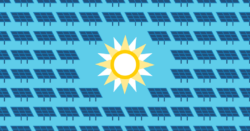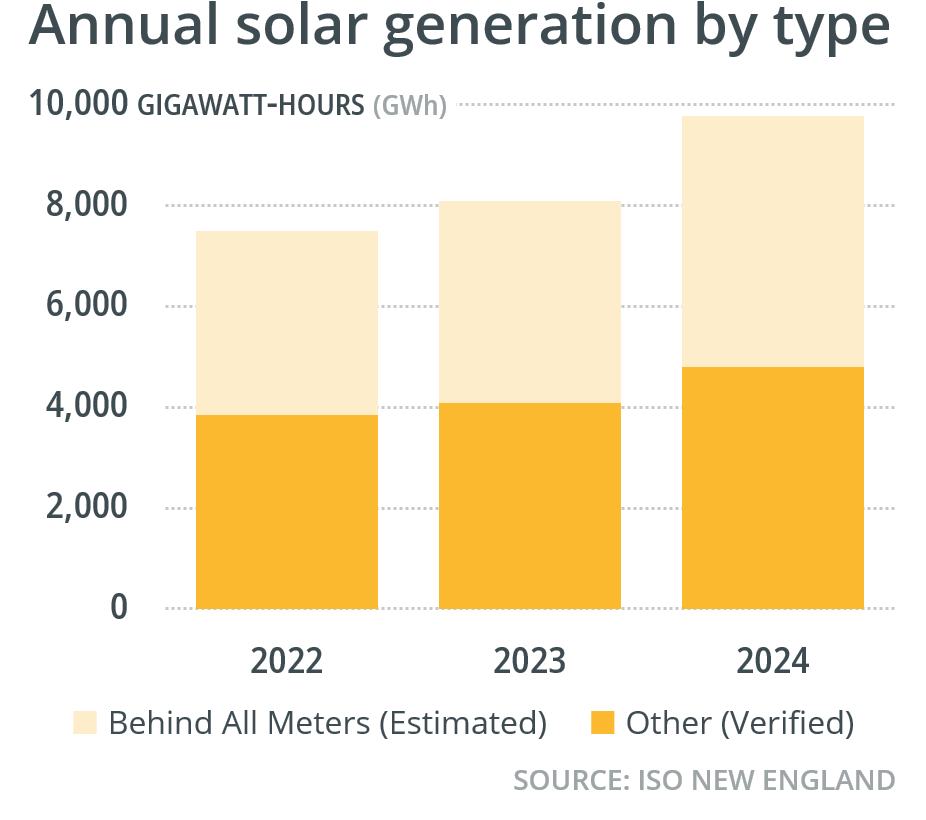Solar power reduced New England power grid demand by 5% in 2024

Solar power installations that are not directly connected to the region’s grid reduced the amount of electricity consumed by New Englanders in 2024 by about 5%.
Photovoltaic (PV) systems that are considered “behind all meters” last year reduced demand on New England’s bulk electric system by an estimated 5,266 gigawatt-hours (GWh)—enough electric energy to power about 600,000 homes for a year.
The region consumed roughly 117,000 GWh of grid electricity in 2024. Without demand reductions from behind-all-meters PV, consumption from the grid would have been about 122,000 GWh.
Behind-all-meters PV includes rooftop and other solar installations connected to local electricity distribution systems, rather than the regional transmission system. These resources do not participate in the region’s wholesale electricity markets and are not monitored or dispatched by ISO New England. However, the ISO gathers data from distribution companies and other sources in order to estimate their current capacity and output, and to forecast their capacity and output in the future.

The ISO began tracking behind-all-meters PV production in 2014, when solar installations reduced grid demand by an estimated 519 GWh. The 2024 results show the region’s behind-all-meters PV output has increased by a factor of 10 over the last a decade. Between now and 2034, annual energy output from these resources is expected to more than double.
In terms of nameplate capacity, behind-all-meters PV made up 53% of New England’s solar fleet in 2024.1 That fleet also includes other types of solar resources that participate in the markets and provide verified production data to the ISO, either in real time or later.
The ISO in 2022 began producing an annual tally of the capacity of and energy output from all solar resources in the region. In that time, the region’s total solar capacity has grown 40%, while solar generation has increased 30%.
- Nameplate capacity refers to the total amount of electricity a resource could produce running at 100% of its capability. ↩︎
- Categories
- Inside ISO New England
- Tags
- solar, system planning
